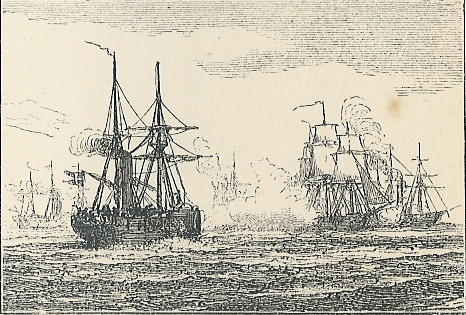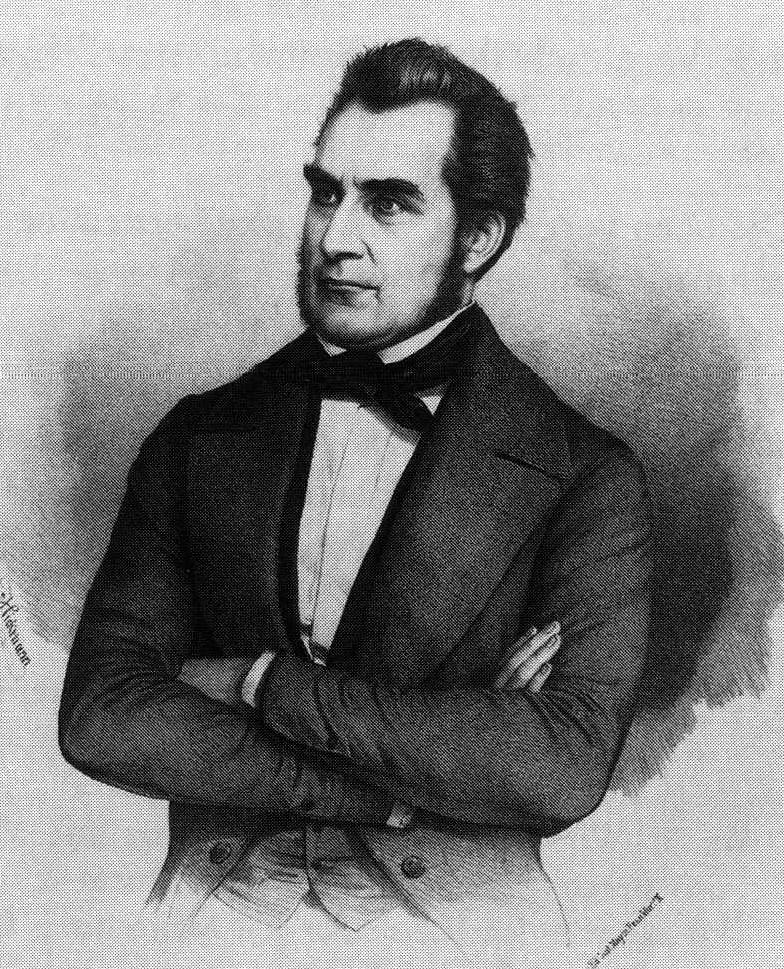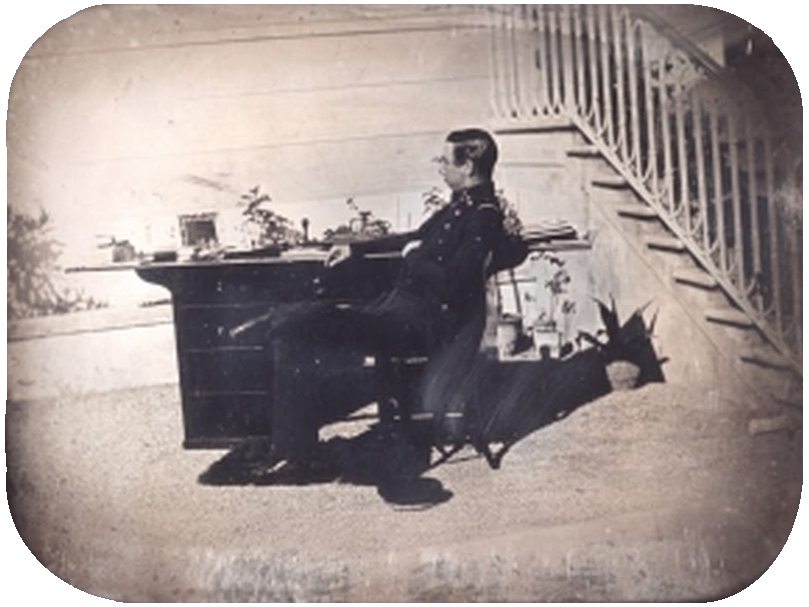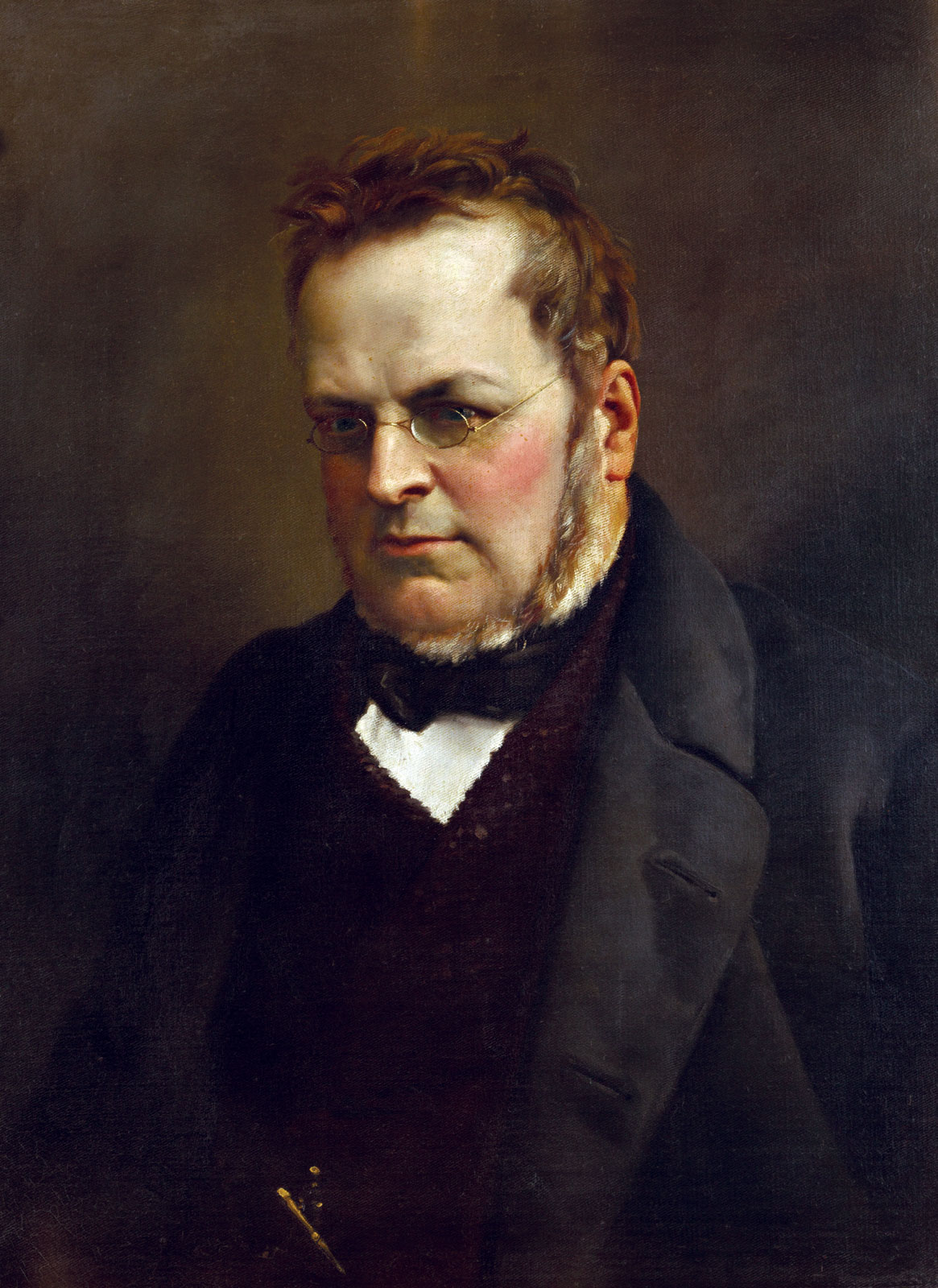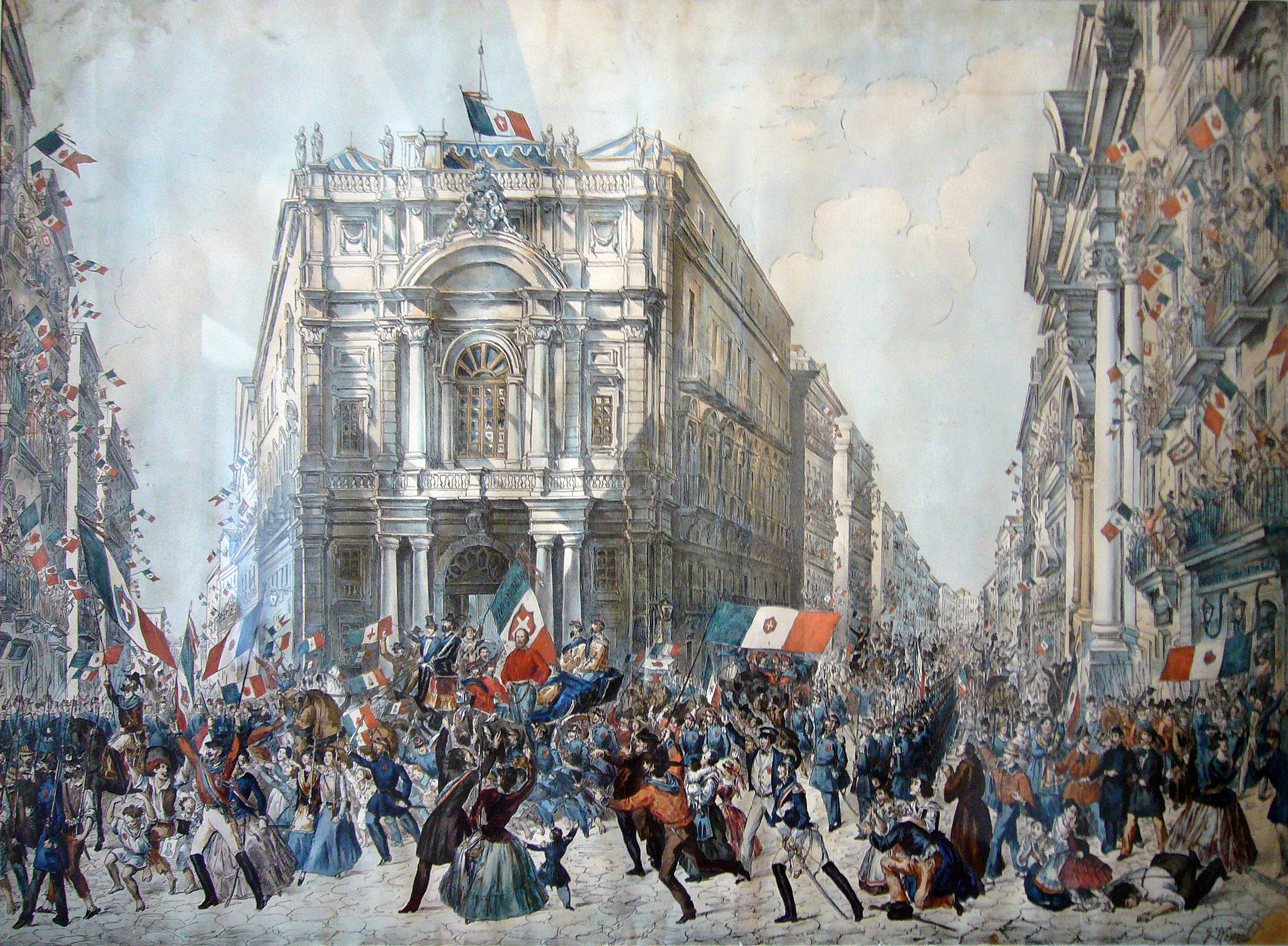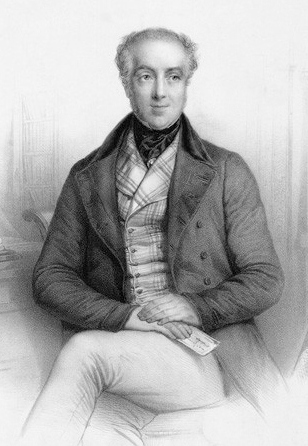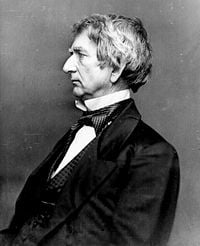The dominance of federal politics enjoyed by Heinrich von Gagern's Liberals came to an abrupt end in the 1858 federal elections as voter anger towards the widely publicised corruption scandal between prominent Liberal MPs involving the West Africa Company (
Westafrika Gesellschaft abbreviated to WAG) in 1857 saw them shed votes heavily to the right, with the moderate Catholic Party [1] (whose heartlands comprised the southern states) and the more nationalist National Conservative Union [2], who won support from the junkers and other traditional sectors of Prussian society. The Liberals were further pressed by Robert Blum's Democrats [3] who had begun to ally themselves with the emerging radical and socialist workers movements in the rapdily growing German cities. [4] Despite these various problems, the Liberals managed to secure enough seats to remain the largest party and limped on under von Gagern as a minority government until their budget was defeated in February 1859. [5] Von Gagern resigned for a second time, leaving uncertainty behind him [6], uncertainty further exacerbated by the severe stroke suffered by Emperor Frederick William in 1858, shortly after the elections had resulted in a hung parliament. This left his brother William, the cool headed pragmatist in contrast to his prickly brother as regent. The news complicated matters for he imperial family, who in that same year had celebrated the marriage of Victoria, Princess Royal and William's son Frederick. [7]
The Liberals, now under the leadership of the former Minister of Justice Robert von Mohl, [8] were despite their failure to win a majoity the largest party. However, they were riven with factionalism as the conflicts between the radical and moderate wings which von Gagern had kept suppressed exploded into the open, gleefully reported on by Otto von Bismarck's
Der Kurier newspaper. [9] This left the Catholic Party, led by Ludwig Windthorst [10] and the Conservatives of Karl Rudolf Friedenthal [11] to form an uneasy coalition with Friedenthal as Prime Minister and Windthorst as Minister of Justice. Differences in policy between the two parties would hamper government efforts for the majority of Friedenthal's term in office, though he an Windthorst personally enjoyed an amicable working relationship. [12]
Karl Rudolf Friedenthal and Ludwig Windthorst, the leaders of the first Conservative government in Germany
Economically the government abandoned the laissez-faire policies of the von Gagern period, with a shift to protectionist policy and statist involvement in the economy, with the state beginning to take on more interests in industry outside of the expansion of railways which had begun under the previous Liberal administration. This was particularly seen in the area of steel and coal production, with the federal government passing the "Coal-Iron Act" in 1859 which provided loans to iron and steelworks seeking to purchase mines to establish their own coking centres [13] creating a boom in the industry as numerous firms established themselves in the Ruhr Valley. This boom had an important demographic shift, as large numbers of economic migrants particularly from the Polish regions of Prussia began to arrive en masse, often finding themselves living in cramped and unsanitary conditions in the new industrial centres, an issue which would become a
cause celebre for the rising trade union movement. [14]
Friedenthal's government, containing as it did large numbers of nationalist deputies, also increased funding to the military and colonial ventures. The funding increase to the military focused heavily on the army, while the more nationalist elements of his cabinet and the army began drawing up plans for a potential war with Denmark over the "unresolved" status of Schleswig-Holstein. [15] In colonial terms meanwhile, the government part funded several settler voyages to the Kamerun and actively recruited missionaries from the various Christian demoninations within the empire for work in Africa, though a proposal to actively recruit settlers among the rural and urban poor was dropped due to fierce cabinet opposition. Despite these successes, the government would eventually collapse over a dispute between its Protestant and Catholic wings over denominational education and it's provision under a proposed new education law, which would have introduced more centralised control over the German education system. [16]
Friedenthal resigned shortly after the coronation of Regent William as Emperor William I, following the resignation of the Catholic deputies from his government. Though shortlived, his ministry showed the viability of both the right as a political force and the relative health of the Frankfurt state, since it had survived an orderly transition of power, though such orderliness would often bely the rather fragile nature of it's party system.
William's first action as Emperor was one he would be called on to perform often in the years of his reign: the dissolution of parliament and the calling of fresh elections.
BRIEF NOTES
[1] The Catholic Party originated as a Catholic interest group in the northern German states formed to protect Catholic minority rights. Following the unification and establishment of the Empire, it began to emerge as the voice of the south, whose strongly Catholic identity provided it with a large voter base to draw upon. Indeed such was it's dominance in the region, that the state governments of Baden, Bavaria and Württemberg had and unbroken line of premiers from the party until the 1880s when the growth of the Socialists began to threaten it's dominance.
[2] The National Conservative Union, simply referred to as the Union by many within the press, formed from the numerous conservative factions which had attended the original Frankfurt parliament as delegates. Nationalists, anti-democratic and very much a bastion of the landowning classes it's heartlands were to be found in the vast estates of the Junkers in Prussia, though it won votes in other states as well.
[3] Robert Blum, one of the most famous orators in the German parliament, had formed the radical Democratic Party in 1850 from the various radical and revolutionary elements which had coalesced in the café culture of Frankfurt around the time of the parliament's formation. The party had begun to fragment by the time of Friedenthal's government, with Blum developing an interest in the burgeoning socialist and trade union movements.
[4] The rapid growth of the industrial workforce and the cities which swelled to accommodate them, had seen living conditions deterioate in Germany's urban centres. The first trade unions emerged from this environment in the 1850s and their membership began to expand rapidly, with many affiliating themselves to a particular political ideology. The unions would later form the basis for the first socialist inspired political parties within the country.
[5] Despite their problems, the Liberals had built an electoral base which was remarkably hard for the other parties to shift, with the cities comfortably returing Liberal deputies to th
e House of Commons. Nevertheless, their failure to secure a majority meant that they could only survive on limited time as a minority government, one which faced hostility from both the left and right. Merck's budget aimed to pacify both sides, as well as the factions developing within the party by appealing to both sides, but in the end failed to satisfy anyone.
[6] Von Gagern's resignation caused uncertainty, simply because for many he
was the office of Prime Minister, and his vacation of the office felt to many like the end of an era.
[7] The marriage had been in the making since the Great Exhibition, and was met with happiness in both Britain and Germany, with the ceremony attended by membrs of both families (including the Queen's uncle Leopold I of Belgium.) It was also the last public appearance of Frederick William before his stroke.
[8] Robert von Mohl had served as the Justice Minister since the government of Auerswald, and given the unpopularity of Merck, he emerged as the leading senior candidate to replace Gagern.
[9] Indeed the factionalism between the radical wing and the moderates threatened to split the party. The rightist press, particularly Bismarcks newspaper watched this with joy, for they strongly disliked both von Gagern and the Liberals. Von Mohl's leadership was frequently depicted as merely keeping the seat warm for von Gagen's eventual return to power, with the former prime minister's refusal to retire reported on deliberately by
Der Kurier to undermine von Mohl's position.
[10] Windthorst was something of a rarity, as both a Hanoverian Catholic, and as a committed parliamentarian famed for his oratory and dedication to the democratic constitutionalism of the Frankfurt state, and a explicit anti-liberal. This made him something of an uneasy ally for the Union, who shared his antipathy towards the liberals but shared none of his democratic convictions.
[11] Friedethal (a Jewish convert to Protestantism) had emerged as the dominant figure in the various conservative groupings which made up the political right in the first years of the Empire, and had been the energetic force behind the formation (with the full support of conservatives such as Bismarck) of a national conservative party in 1852, which promoted both the interests of the traditional classes and German nationalism.
[12] The coalition between the Catholic and Protestant parties was always fraught with mistrust, though their strong mutual antipathy towards the Liberals and laisse faire ensured that they could swallow their pride and just about work together. Windthorst and Friedenthal formed a close relationship being as they were both in their own way outsiders: a northern Catholic, and a Jewish convert to Protestantism.
[13] The law saw a rapid increase in the number of integrated companies within the region, with a resulting boom in coal production which would last throughout the latter half of the century.
[14] The slum conditions were notoriously bad inspiring several commentaries as a result, including one by Engels and Marx the authors of
The Communist Manifesto. The rapid growth of the cities, and the lack of building created numerous shanty towns, which became known as
Arme Häuser (Alms Houses), many of which became infamous for widespread poverty, disease and early death. The shocking conditions would prove a catalyst for the burgeonining trade unions, as the majority of people living there were workers in the newly built factories. The widespread influx of Poles into the Ruhr area also caused friction, as the new arrivals and the local Rhinelanders clashed over housing and work.
[15] The desire to "reclaim" the region from the Danes was vocally expressed on the right, though it was an issue popular across the political spectrum. The humiliation of Fredericia was still keenly felt.
[16] The dispute was essentially over whether religious education would be provided by the dominant church in the area, or the official state church of the Empire (which was the Lutherans) and whether the churches had the right to run schools within the proposed state system. The issue would continue to vex successive governments of both sides of the political spectrum for the next decade.





